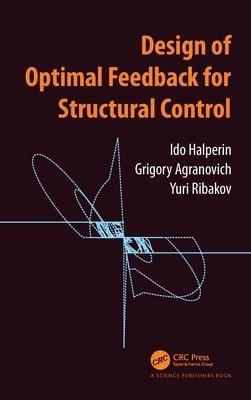
- We will send in 10–14 business days.
- Author: Ido Halperin
- Publisher: CRC Press
- ISBN-10: 0367354128
- ISBN-13: 9780367354121
- Format: 15.6 x 23.4 x 1.3 cm, hardcover
- Language: English
- SAVE -10% with code: EXTRA
Reviews
Description
Structural control is an approach aimed at the suppressing unwanted dynamic phenomena in civil structures. It proposes the use of methods and tools from control theory for the analysis and manipulation of a structure's dynamic behavior, with emphasis on suppression of seismic and wind responses. This book addresses problems in optimal structural control. Its goal is to provide solutions and techniques for these problems by using optimal control theory. Thus, it deals with the solution of optimal control design problems related to passive and semi-active controlled structures. The formulated problems consider constraints and excitations which are common in structural control. Optimal control theory is used in order to solve these problems in a rigorous manner.
Even though there are many works in this field, none comprise optimization techniques with firm theoretical background that address the solution of passive and semi-active structural control design problems. The book begins with a discussion on models which are commonly used for civil structures and control actuators. Modern theoretical notions, such as dissipativity and passivity of dynamic systems are discussed in context of the addressed problems. Optimal control theory and suitable successive methods are reviewed. Novel solutions for optimal passive and semi-active control design problems are derived, based on firm theoretical foundations. These results are verified by numerical simulations of typical civil structures which are subjected to different types of dynamic excitations.
EXTRA 10 % discount with code: EXTRA
The promotion ends in 17d.13:07:37
The discount code is valid when purchasing from 10 €. Discounts do not stack.
- Author: Ido Halperin
- Publisher: CRC Press
- ISBN-10: 0367354128
- ISBN-13: 9780367354121
- Format: 15.6 x 23.4 x 1.3 cm, hardcover
- Language: English English
Structural control is an approach aimed at the suppressing unwanted dynamic phenomena in civil structures. It proposes the use of methods and tools from control theory for the analysis and manipulation of a structure's dynamic behavior, with emphasis on suppression of seismic and wind responses. This book addresses problems in optimal structural control. Its goal is to provide solutions and techniques for these problems by using optimal control theory. Thus, it deals with the solution of optimal control design problems related to passive and semi-active controlled structures. The formulated problems consider constraints and excitations which are common in structural control. Optimal control theory is used in order to solve these problems in a rigorous manner.
Even though there are many works in this field, none comprise optimization techniques with firm theoretical background that address the solution of passive and semi-active structural control design problems. The book begins with a discussion on models which are commonly used for civil structures and control actuators. Modern theoretical notions, such as dissipativity and passivity of dynamic systems are discussed in context of the addressed problems. Optimal control theory and suitable successive methods are reviewed. Novel solutions for optimal passive and semi-active control design problems are derived, based on firm theoretical foundations. These results are verified by numerical simulations of typical civil structures which are subjected to different types of dynamic excitations.


Reviews